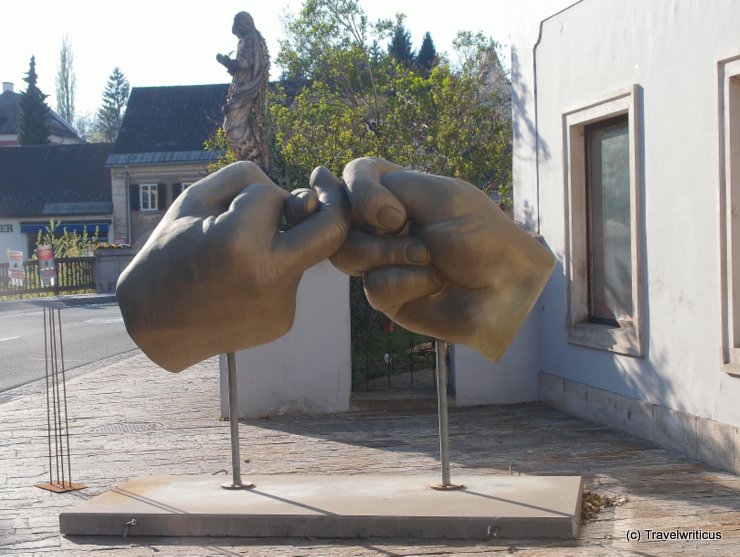
On a sunny spring day in 2012, I came across this sculpture in Ehrenhausen. At first view, it looked like public art portraying something fictitious. But this is wrong. It stands for a real sport with official championships: Finger pulling.
You only see what you know (Goethe)

On a sunny spring day in 2012, I came across this sculpture in Ehrenhausen. At first view, it looked like public art portraying something fictitious. But this is wrong. It stands for a real sport with official championships: Finger pulling.
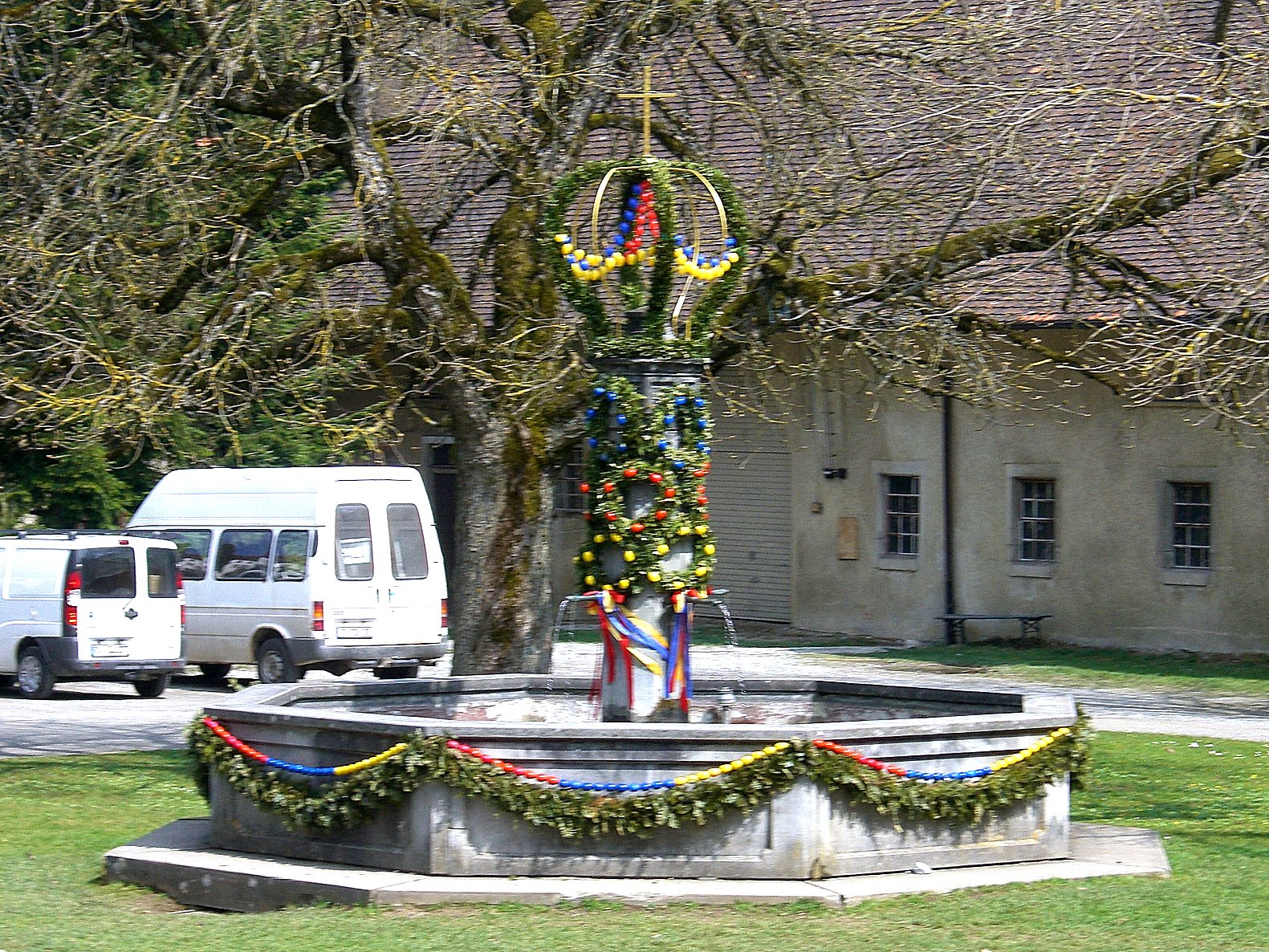
Decorated Easter Wells (Osterbrunnen) are a German tradition dating back to the early 20th century. The first examples developed in Franconian Switzerland (Fränkische Schweiz). In the meantime, more and more Easter Wells and Fountains have arisen in other parts of Germany.
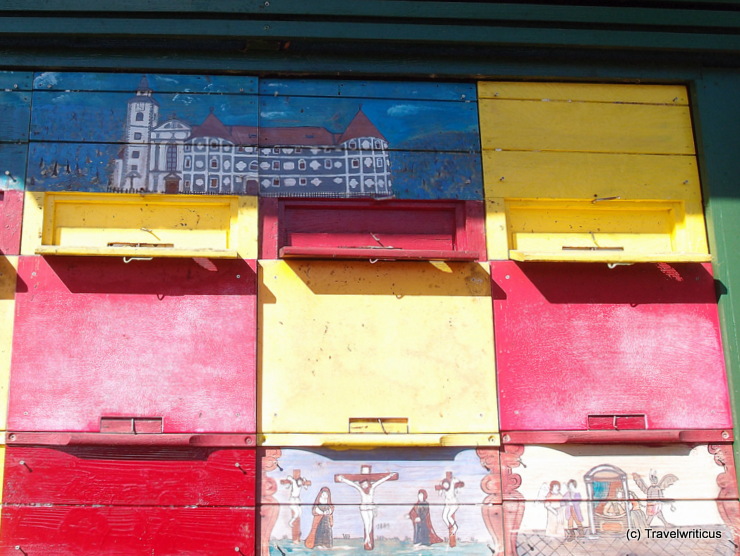
In the areas of Slovenian Styria (Slovenska Štajerska), Carniola (Kranjska)and the Austrian state of Carinthia (Kärnten) one can find these traditionally painted bee boards (Panjske končnice). With the help of these paintings, beekeepers were able to find the right hive.
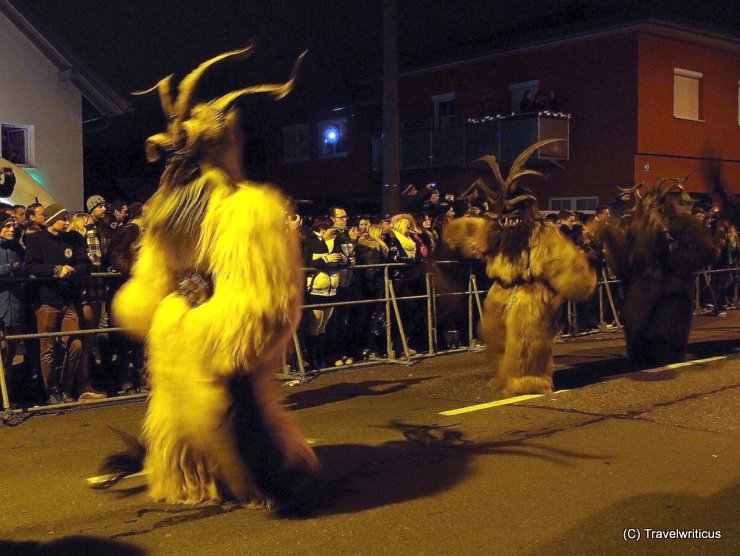
The Krampus procession (Krampuslauf) is a tradition generally performed on a certain day from the beginning of the advent season up to the first half of January. People organised in groups named Pass run in costumes created by themselves through the streets and try to frighten the spectators.
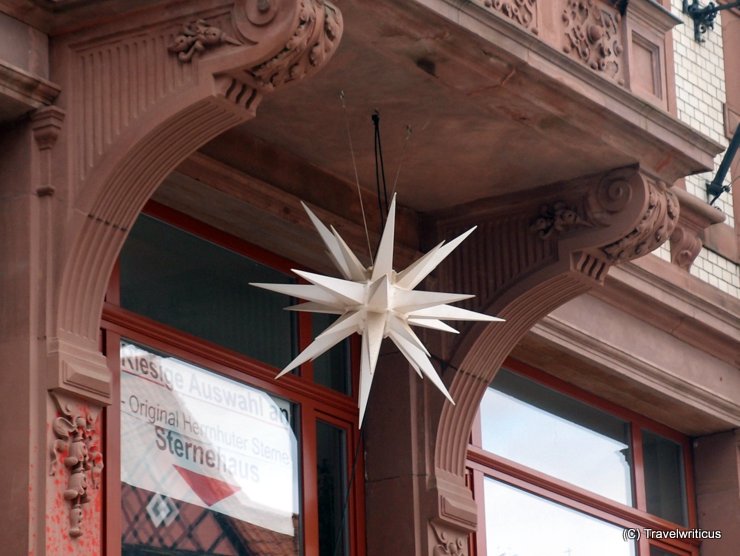
On my walk through Quedlinburg, I came across this Moravian Star. Generally, it is an Advent decoration popular in Germany and other places where there are Moravian congregations. The German name Herrnhuter Stern refers to the city of Herrnhut. There the stars were first commercially produced.
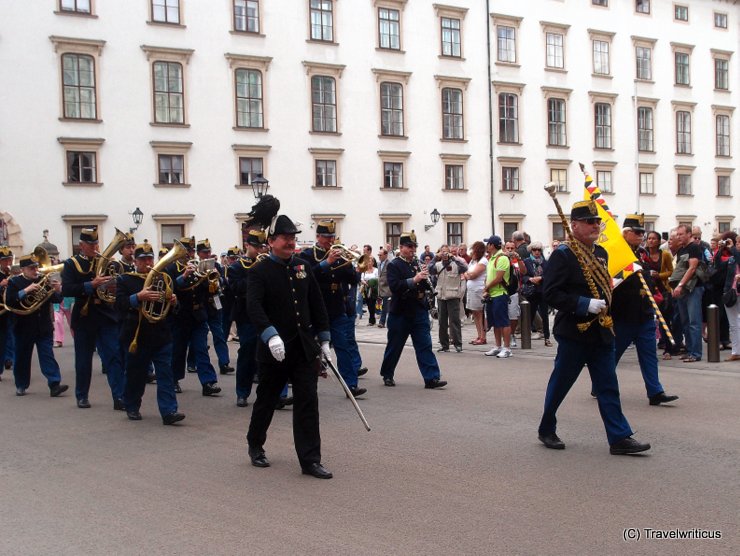
On certain days one can watch the Hoch- und Deutschmeister band in Vienna playing in their traditional uniforms of before 1918. This military band has its origins in the k.u.k. Lower Austrian Infantry Regiment Hoch- und Deutschmeister No. 4. [German]
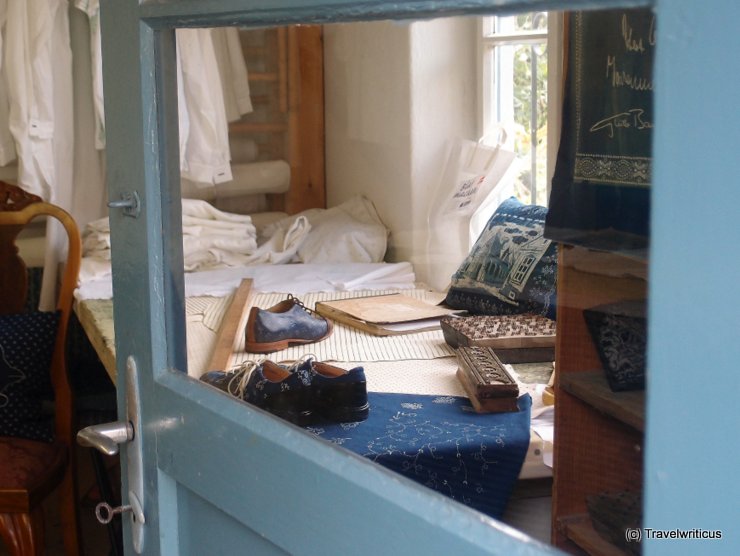
The Blaudruckerei Koó in Steinberg-Dörfl, established in 1921, is one of the last businesses in Europe using the traditional technique of Indigo handblock printing. Visitors of this company will learn about the machines, materials and patterns used in this technique.
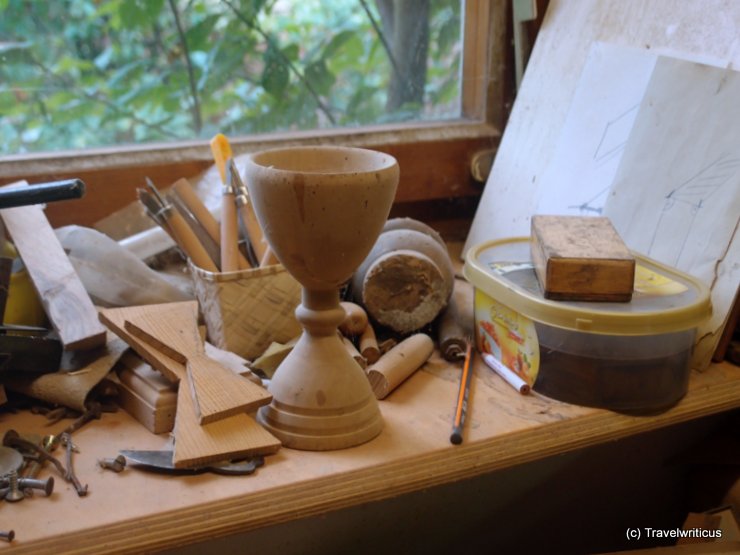
At the Kunsttischlerei (cabinet maker) Potzmann I got in touch with Mr. Franz Potzmann who is not only a restorer for furniture but also offers lessons in restoring furniture yourself. After a small interview in the garden of his house, where also his lessons take place on sunny days, I had the chance to polish a small box myself.
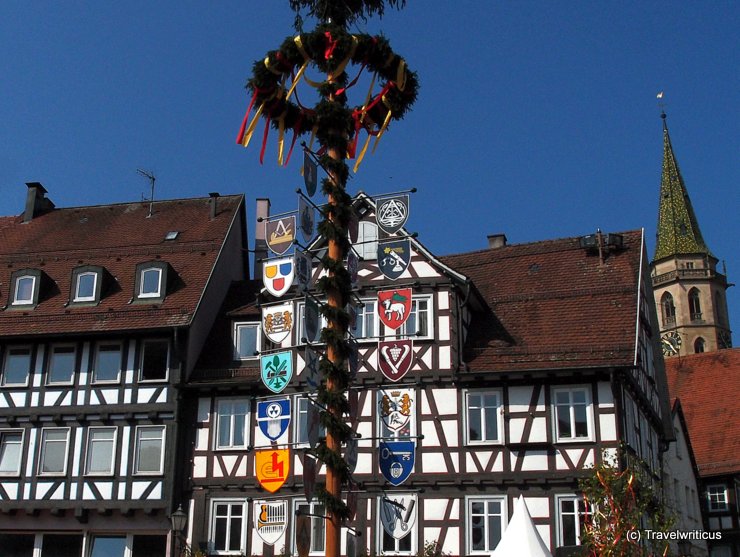
The photo depicts a maypole at the marketplace of Schorndorf. The signs placed at the maypole represent different industries working in the city. Are there similar maypoles in your region?
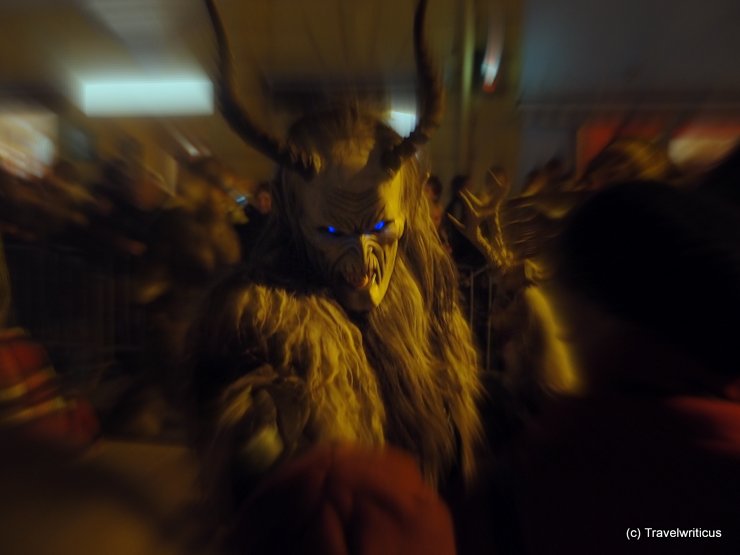
The Perchtenlauf (Procession of Perchten) in Judenburg was the first Perchtenlauf I have ever watched. I was impressed with how scary the masks looked. Though I don’t think that a Perchtenlauf in the middle of November is traditional, I like the idea of this event and recommend watching such a procession if you get the chance anywhere in the Alpine region.
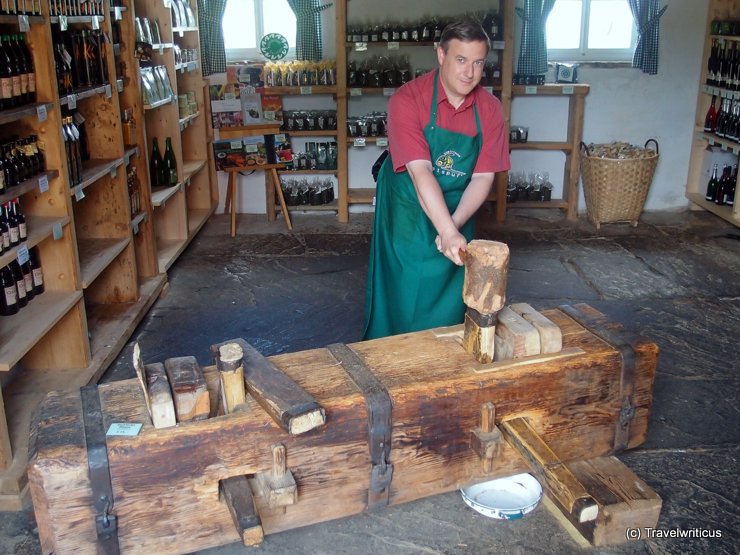
Me and the ‘Ölkuh’. By pounding a wedge into this traditional tool the pumpkin seeds stored in the two plates of bright wood get pressed and delicious pumpkin seed oil drops into the bowl below.
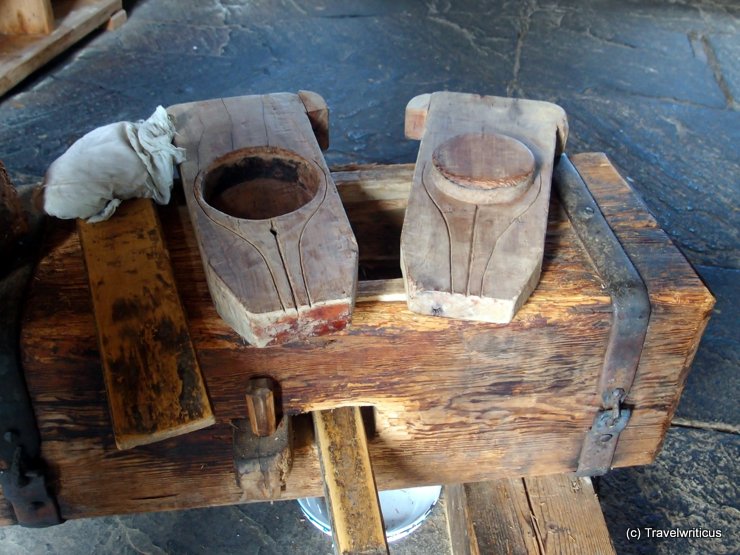
On my tour through Styria I came across a tool named ‘Ölkuh’ (literally translated: Oil cow). This is a traditional tool to produce pumpkin seed oil in my home region Styria. Have a look how to use such a ‘Ölkuh’.